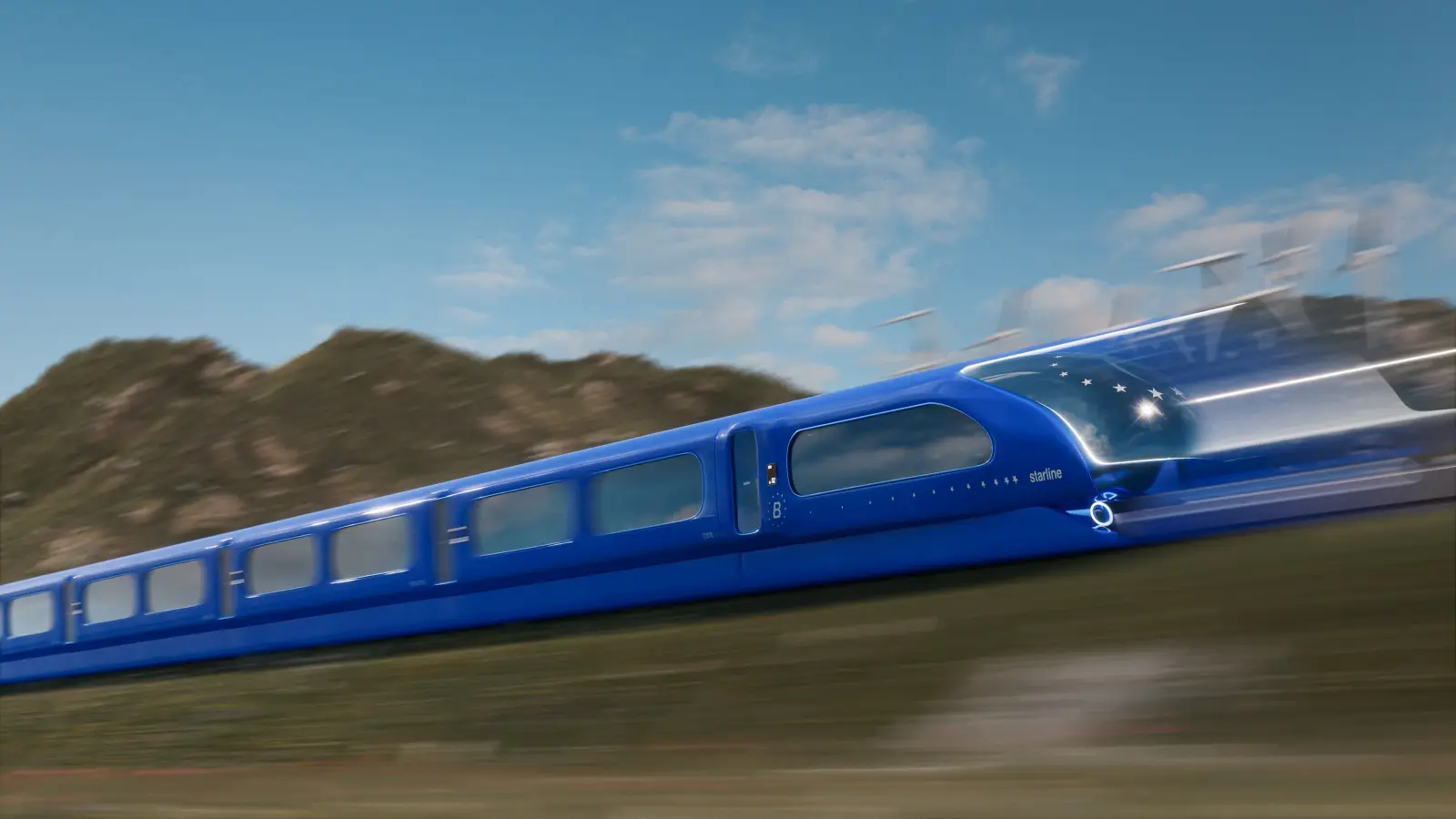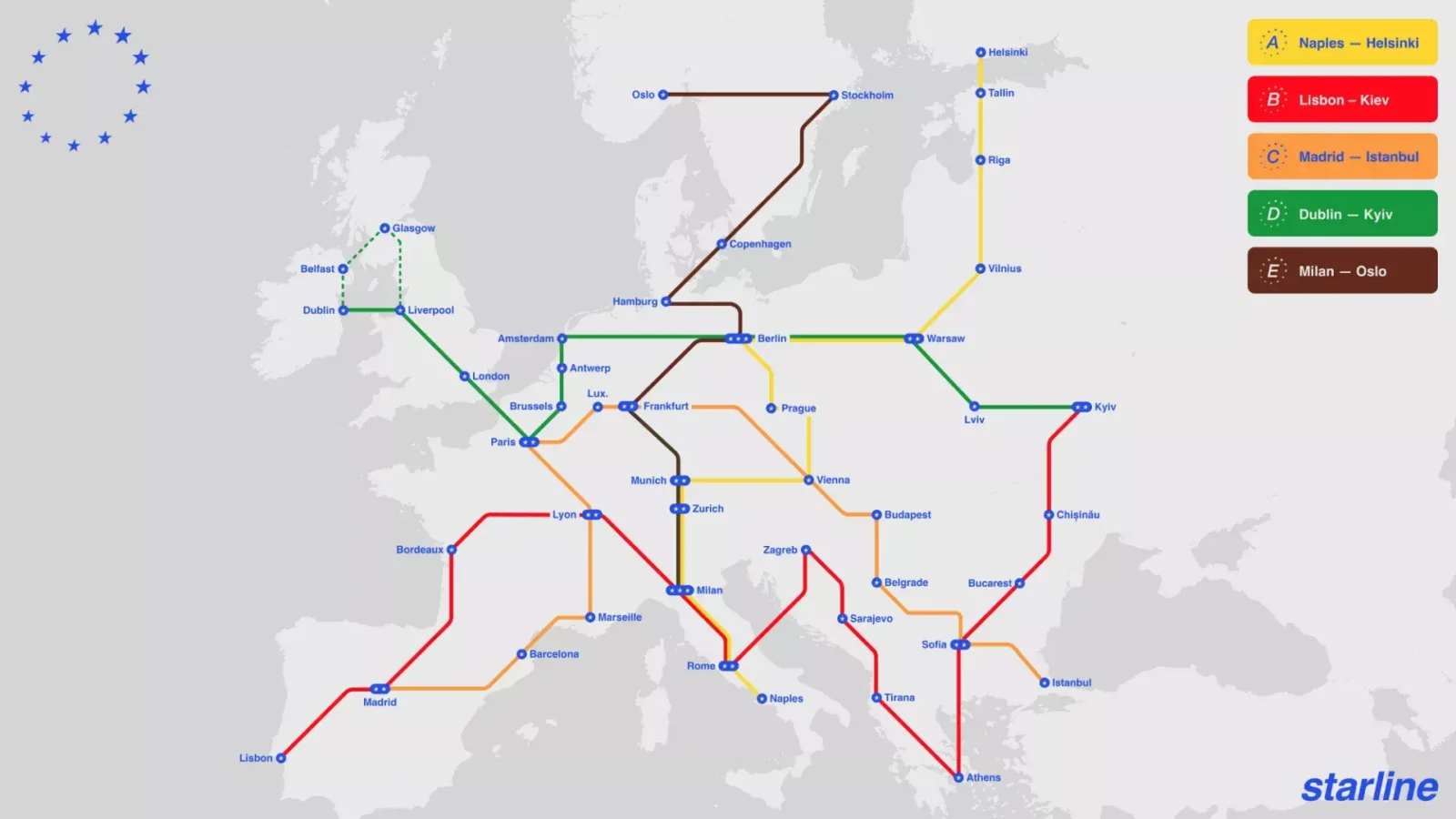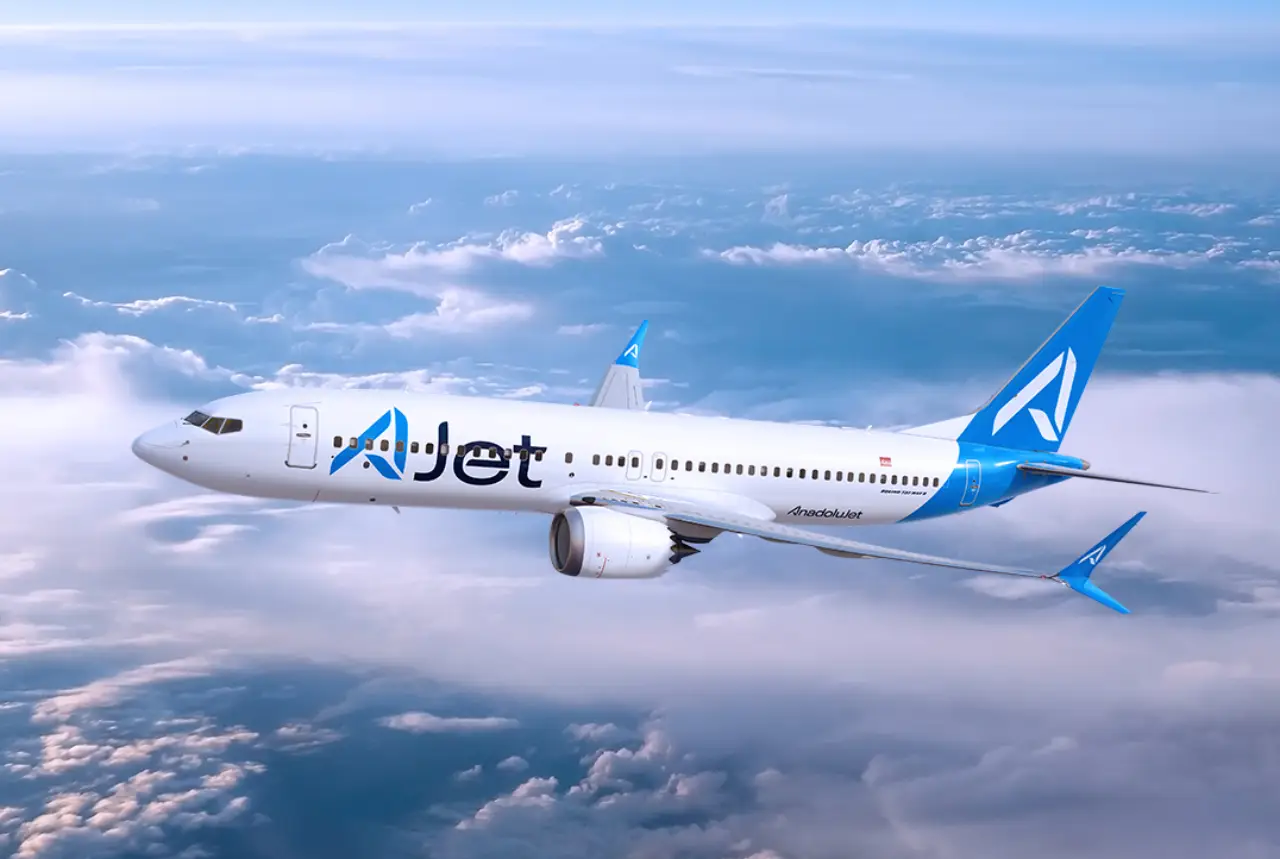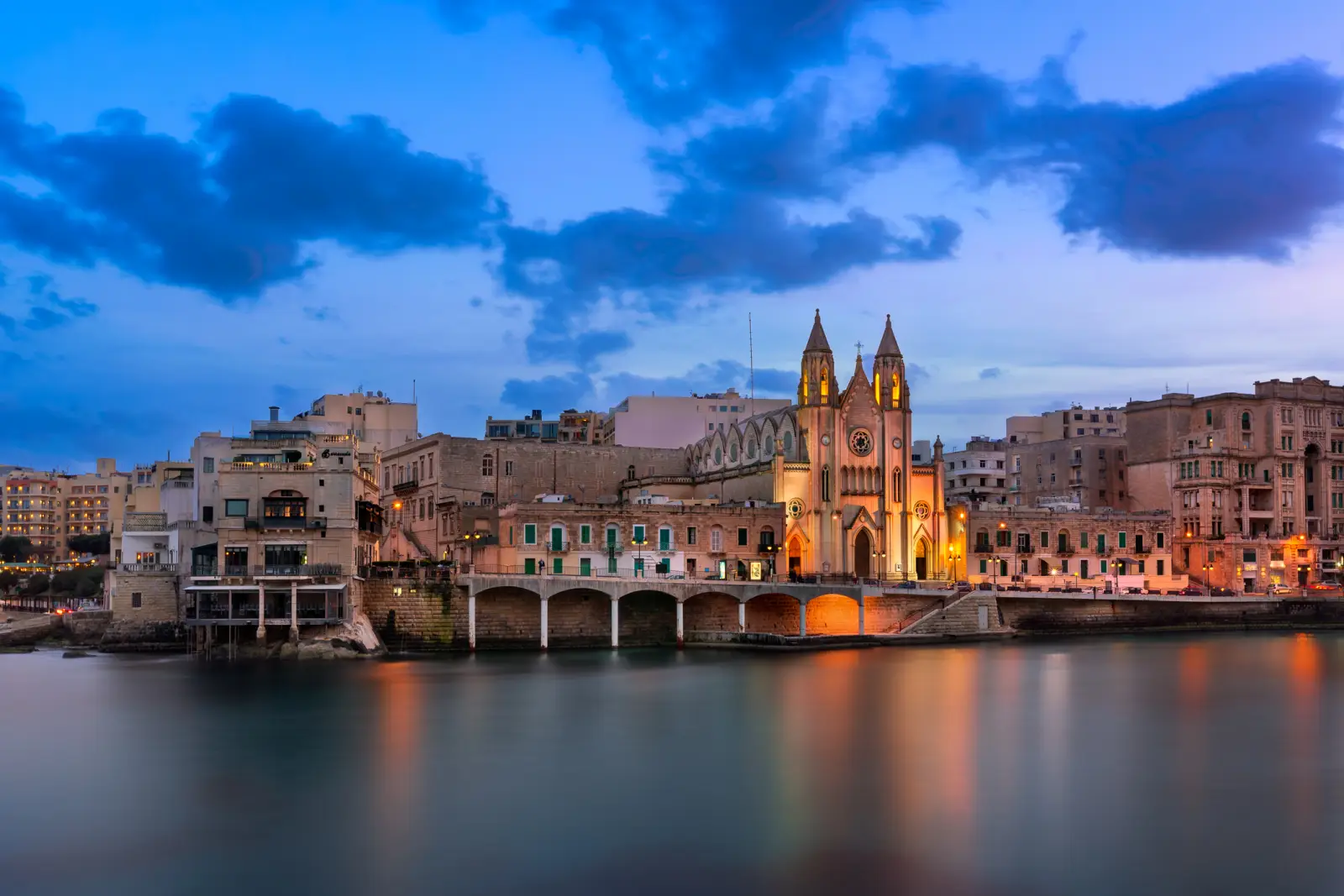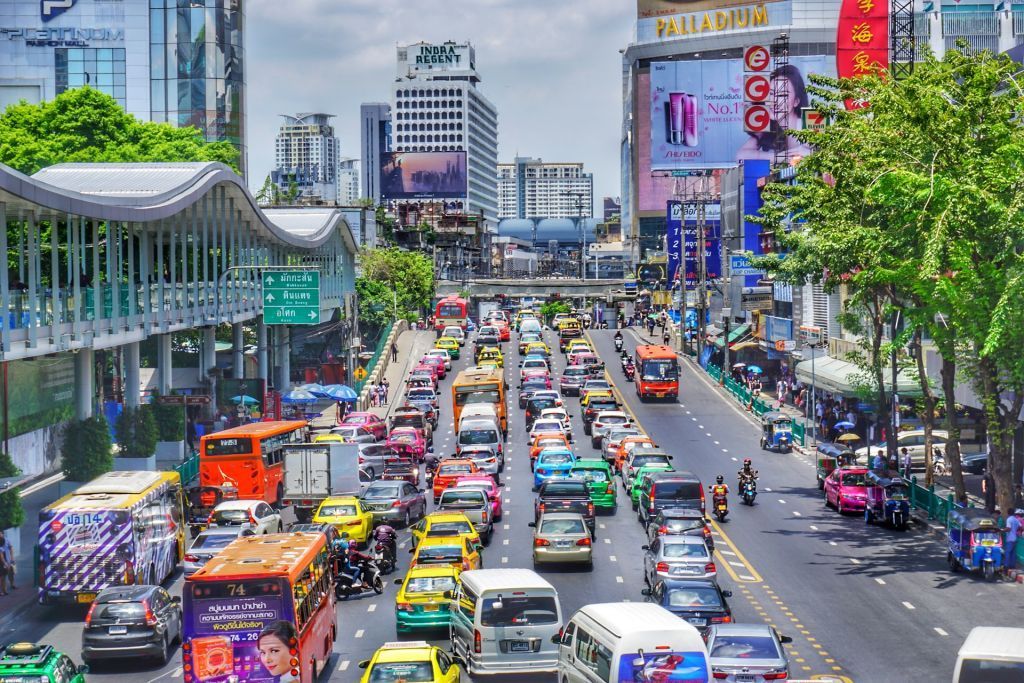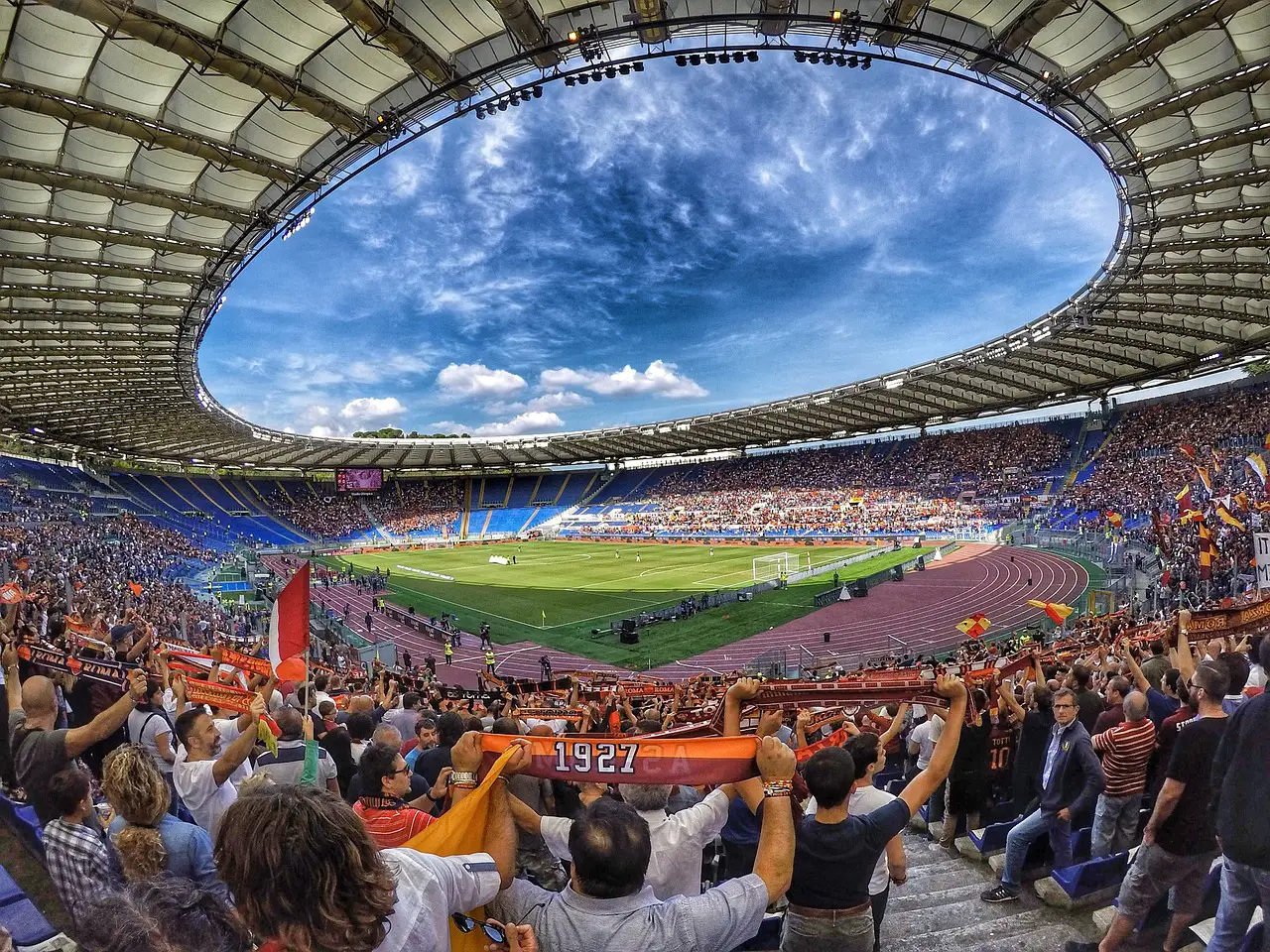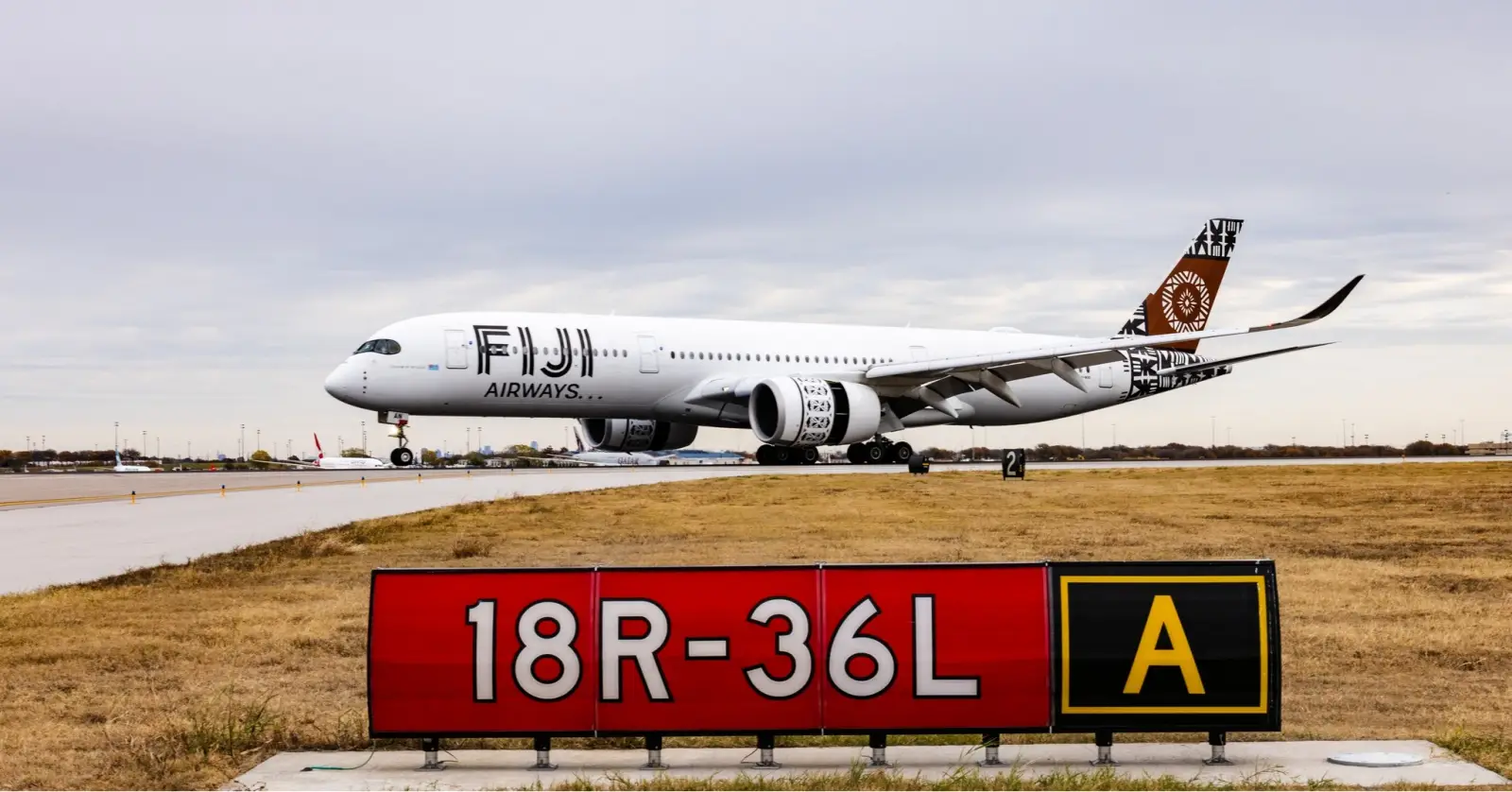Could the future of European travel involve zipping from city to city without ever boarding a plane?
A newly proposed high-speed rail system called Starline could soon make that a reality. Backed by the Copenhagen-based think tank 21st Europe, the project aims to connect 39 major cities across the continent—stretching from Dublin to Istanbul and Kyiv to Lisbon—via a 22,000-kilometer ultra-fast train network. The goal? To make traveling across Europe as seamless as riding a metro in a single city.
Trains would travel at speeds of 300 to 400 kilometers per hour, slashing travel times between cities. Imagine traveling from Helsinki to Berlin in just over five hours instead of a full-day journey, or going from Milan to Munich in a quick, high-frequency ride. According to the planners, even long hauls like Kyiv to Berlin, once overnight trips, would become smooth and predictable.
The Starline project envisions five primary lines: Line A linking Helsinki to Naples, Line B running from Lisbon to Kyiv via Madrid, Line C connecting Madrid and Barcelona with Istanbul, Line D stretching between Dublin and Kyiv, and Line E linking Milan with Oslo. Each line would operate like a metro route, color-coded and simple to navigate, giving a new face to European train travel.
The vision goes beyond speed. Starline trains will have a sleek deep blue design and offer spaces tailored to different types of travelers. There will be quiet zones for those working, family-friendly sections, and carriages designed for comfort, not class division. Stations won’t be just functional—they’ll be cultural hubs. New terminals located just outside major cities would feature restaurants, shops, and even event spaces like concert halls and museums, connected directly to local urban transport systems.
One of the biggest motivations behind the project is climate change. Transportation is one of the largest sources of greenhouse gas emissions in Europe, contributing around 29% of the EU’s total emissions in 2022. Short-haul flights, in particular, are a major culprit. High-speed rail, by contrast, emits up to 90% less CO2 per journey. Countries like France and Austria have already restricted short flights where train alternatives exist. But Starline’s backers say a truly impactful change can only come through a continental solution.
“A truly integrated rail system is no longer just a matter of convenience; it’s a strategic necessity for Europe’s resilience in the 21st century,” says 21st Europe. The organization argues that the current system is fragmented, confusing, and outdated. Trains vary widely in design, stations feel disconnected, and the journey itself is rarely designed with the passenger experience in mind.
To fix this, 21st Europe proposes a publicly funded franchise model. Under this plan, national rail operators would run the routes, but the entire system would be coordinated under a new European Rail Authority. This body would ensure consistency in passenger experience, safety, and technical standards. Workers would be trained under a unified European framework, and all parts of the network would function under shared rules, from staffing to maintenance.
The plan is ambitious, and not without challenges. Integrating so many countries under one system will require political cooperation, massive infrastructure investment, and a commitment to standardization. But the team behind Starline believes it can be done—and they want it up and running by 2040.
Rail travel has already seen a resurgence in Europe. Over 400,000 people use Interrail passes each year, and new night train routes are becoming more common. But while the demand is clearly there, the experience often remains inconsistent and expensive, especially when crossing borders. Starline hopes to change that by creating a continent-wide system that feels as familiar and easy as a local metro.
In the long run, Starline could redefine how Europeans and visitors experience the continent—not as a patchwork of disconnected cities, but as a single, high-speed network that brings people and places closer than ever. Whether you’re a tourist, a commuter, or a business traveler, you might soon find yourself choosing the train over the plane—and enjoying the ride just as much as the destination.

